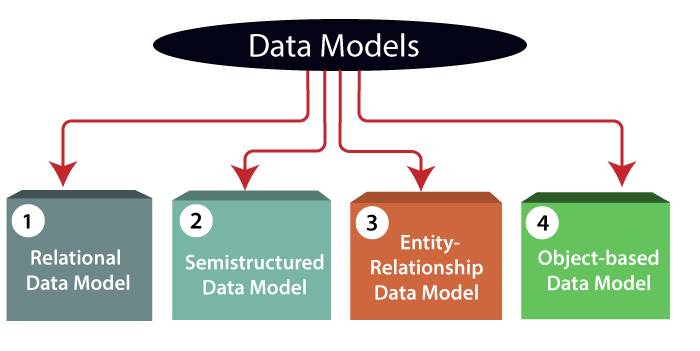Back to: DATA PROCESSING SS 2
Welcome to class!
In today’s class, we will be talking about data models. Enjoy the class!
Data Models

- Definition of Data Model
- Concept of Data Modelling
Introduction to data modelling
The main effort during the system development life cycle (SDLC) was to produce a set of programs that automates a business process. Processing was the key drivers for information systems, not the data or information. As the technology and complexity of system grew, methodologies and modelling techniques were invented to improve the quality of the deliverables and to ensure that inexperienced programmers could follow repeatable SDLC processes.
Definition of data modelling
Data Modelling is the process of structuring and organizing data. The data structures are then typically implemented in a database management system. In addition to defining and organising the data, data modelling may also impose constraints or limitations on data placed within the structure.
Managing large quantities of structure and unstructured data is a primary function of information systems. Data Models describe structured data for storage in data management system such as relational databases. They do not describe unstructured data such as word processing documents, email messages, pictures, digital audio and video.
Concept of data modelling
- Data modelling techniques and tools help to capture and translate complex system designs into easily understood representation of data flows and processes, creating a blueprint for construction and re-engineering.
- Data Models provide a structure for data used within the information system by providing a specific definition and format.
- Data Model shows the dataflow and logical interrelationship among different data elements.
- Compatibility of data can be achieved if a data model is consistently used across the systems.
The term data model actually refers to two different things: a description of data structure and the way data are organized using the Database Management System (DBMS).
Data structure
A data model describes the structure of the data within a given domain and, by implication, the underlying structure of that domain itself.
Data organisation
A data Model also describes how to organized data using a database management system.
Evaluation
- State the concepts of data modelling.
- Describe the following; Data Structure and Data Organization.
The approach in data modelling
There are different approaches to data modelling, including;
- Conceptual Data Modelling: Conceptual data modelling identifies the highest-level relationships between different entities. This is the first step in organising the data requirements.
- Logical Data Modelling: The logical Data modelling illustrates the specific entities, attribute and relationships involve in a business function. It serves as the basis for the creation of the physical data model.
- Physical Data Modelling: The physical Data Modelling represents an application and database-specific implication of a logical data model and describes the physical means used to store data.
General evaluation
- Explain the different approaches to data modelling.
- Define data modelling.
Reading assignment
Data Processing for Senior Secondary Education by HiiT Plc. Chapter One, page 55
Weekend assignment
Instruction: Choose the correct option from the ones lettered A to D
- In the approach of data modelling ____ data modelling illustrates the specific entities, attribute and relationship involved in a business function. (a) Conceptual Data Modeling (b) Logical Data Modeling (c) Flat data Modeling (d)Physical Data Modeling
- The processing of structuring and organizing data is referred to as ______ (a)Data Structure (b) Data Organization (c) Data Manipulation (d) Data Modeling
- The major concept for data modeling is to _____________________
(a) Translate simple system design to a complex representation of data
(b) Translate complex system design to a simple representation of data
(c) Translate simple system design to a simple representation of data
(d) Translate complex system design to a complex representation of data
- The term “Data Model” refers to two different things- data organization and ________ (a) Data Model (b) Data Processing (c) Data Structure (d) Data Organization
- The following are unstructured data except for (a) Video (b) email message (c) Picture (d) Database
In our next class, we will be talking more about Data Models. We hope you enjoyed the class.
Should you have any further question, feel free to ask in the comment section below and trust us to respond as soon as possible.

My teacher ask me to read on uses of spreadsheet and dbms but I can’t find it in my text book
dis is lovely 😍…. anytime I want to do my assignment I always come here cos Ur channel is very much gud for students.. more grace to u all 😁🙏🙏
We’re glad you found it helpful😊 For even more class notes, engaging videos, and homework assistance, just download our Mobile App at https://play.google.com/store/apps/details?id=com.afrilearn. It’s packed with resources to help you succeed🌟
hi my name is treasure.
I don’t understand something you said in conceptual data model: identifies the highest level of relationship…
so like can you give an example of this?
even me, i do not understand that part
it was helpful